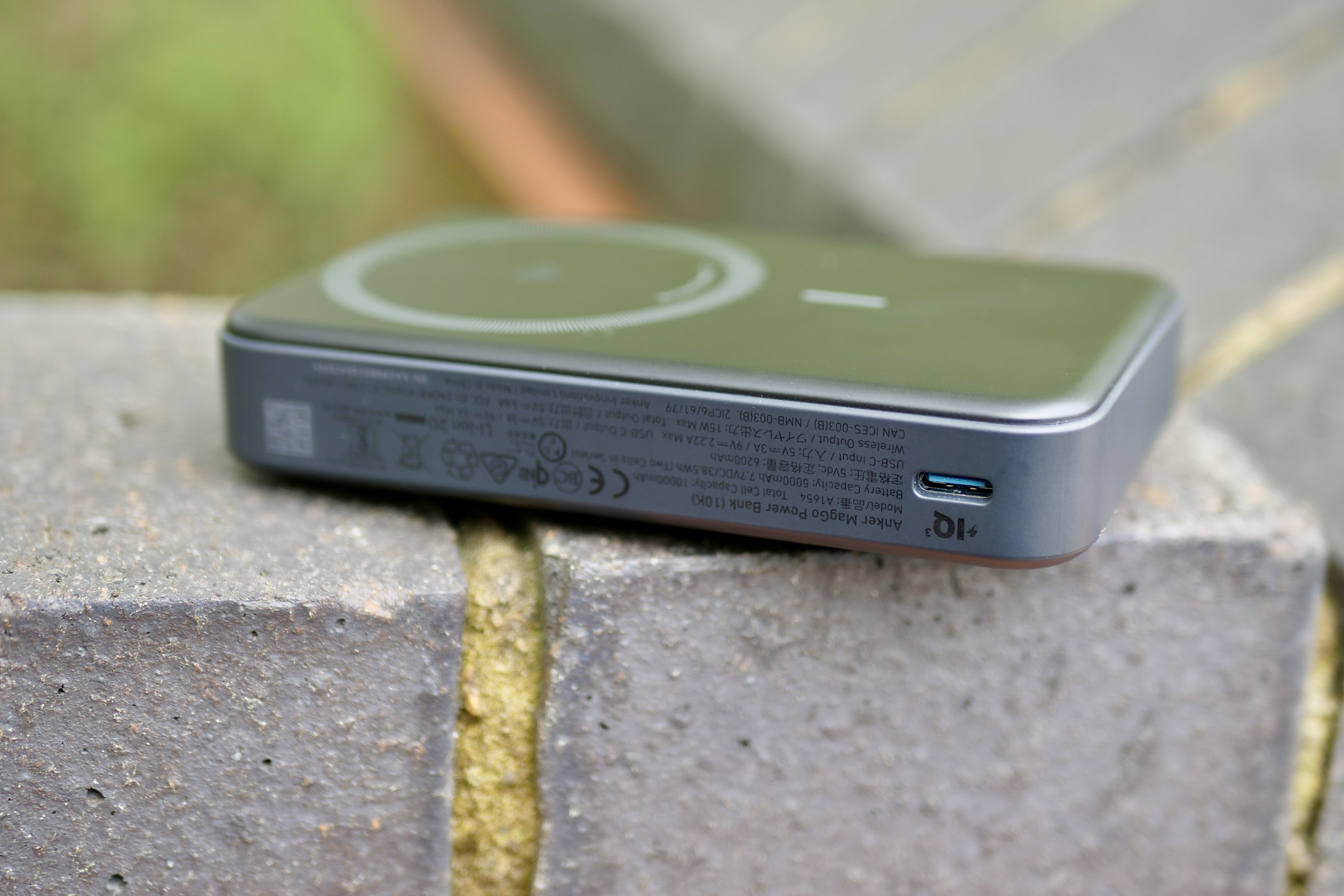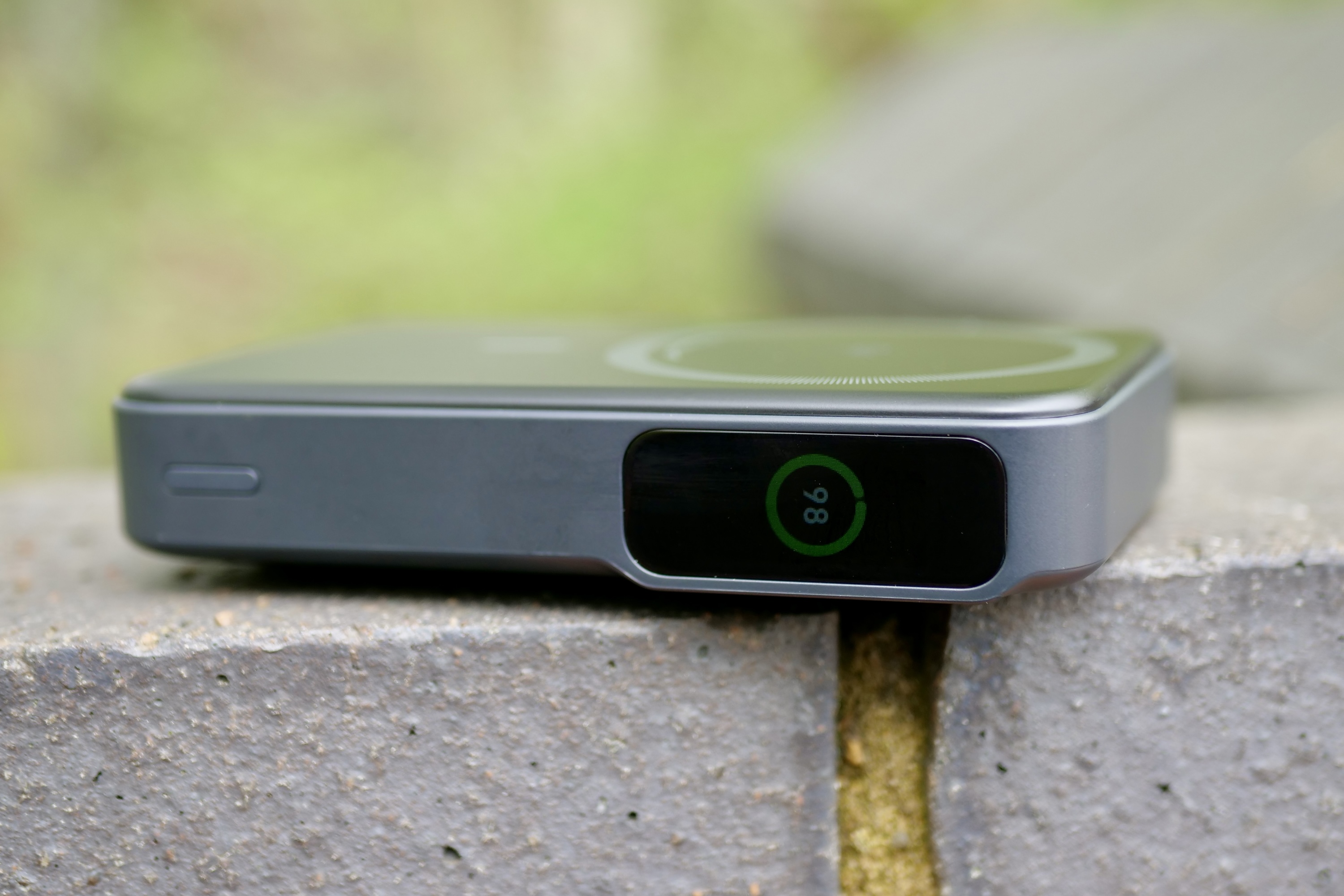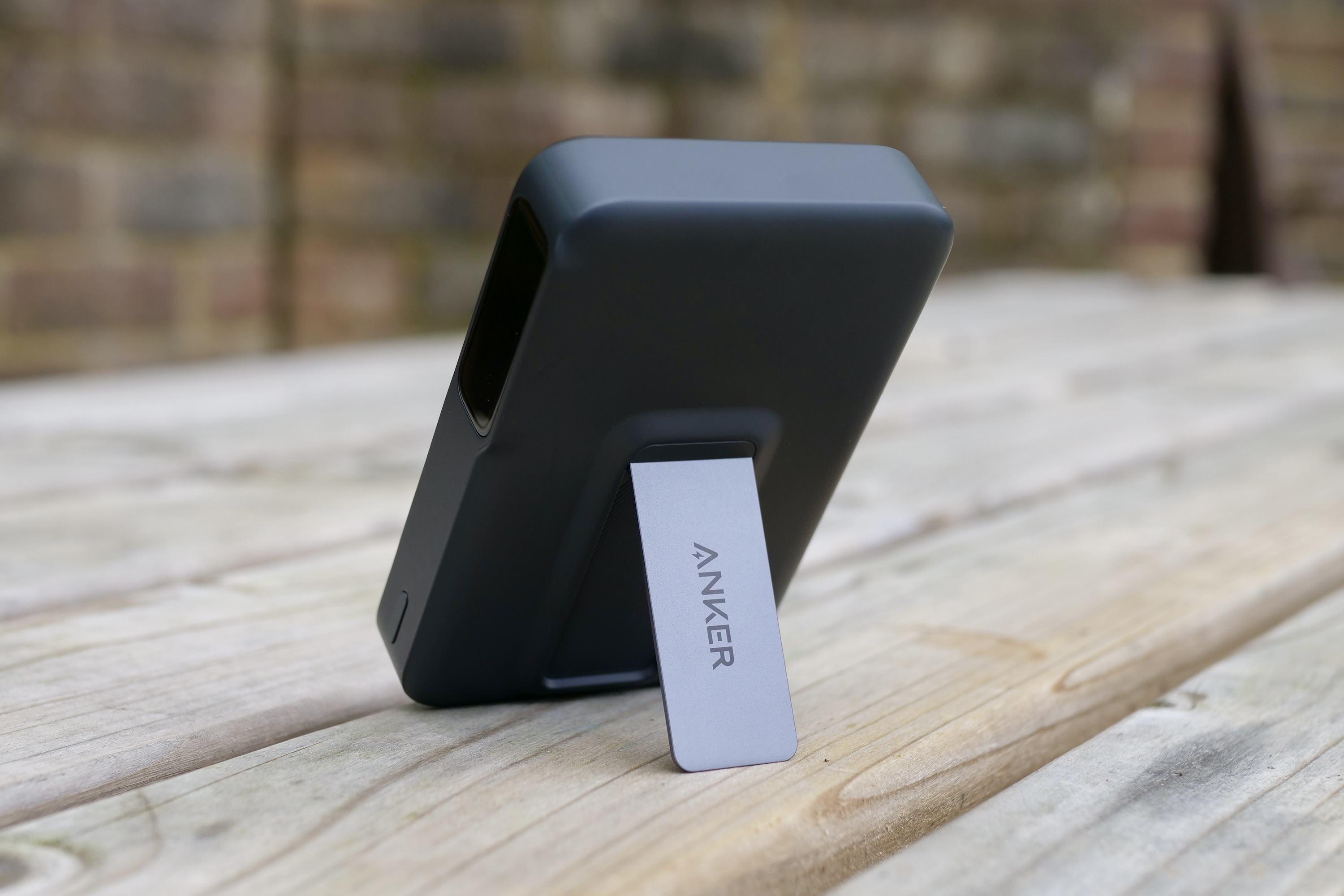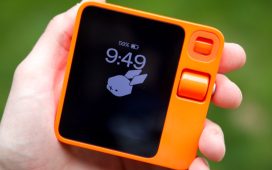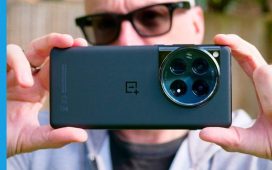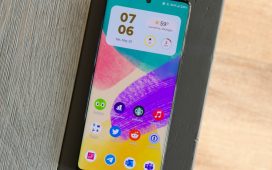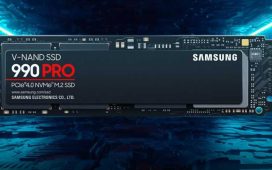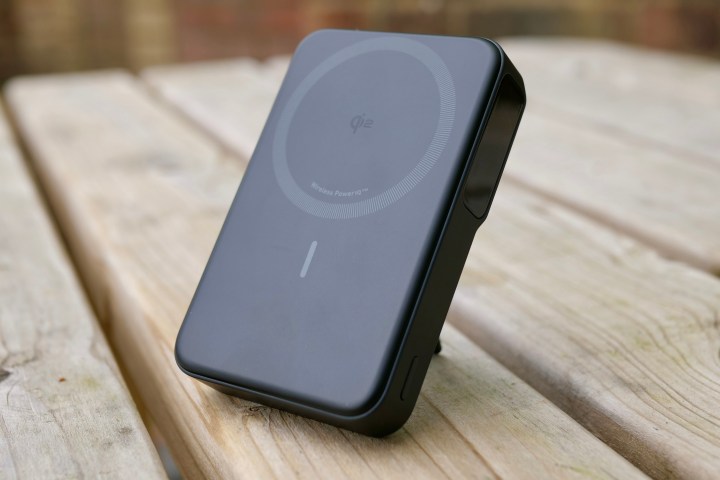
Power banks are a necessary evil, and even if you don’t consider yourself a “power user” who’s likely to drain a phone’s battery in less than a day, there will be times when one comes in handy. And when I am forced to carry one, I want it to be as helpful and versatile as possible.
I’ve been trying Anker’s MagGo Power Bank 10K — meaning it has a 10,000mAh cell inside it — and there are three reasons why I’m OK with it taking up valuable space in my bag.
It has a screen on it
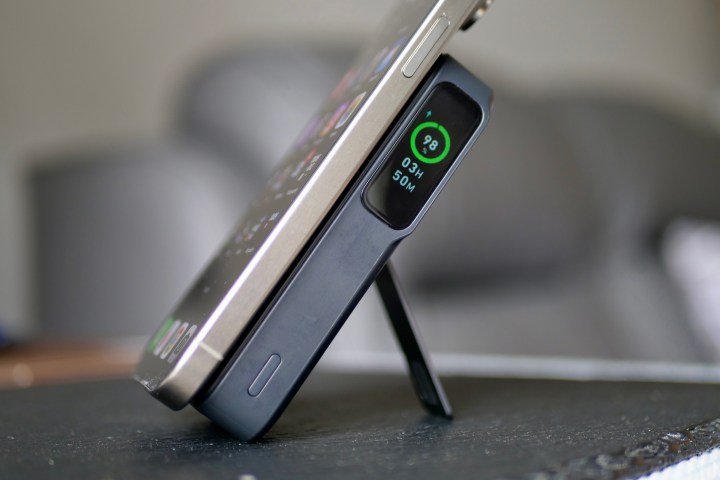
I never expected to care if my power bank had a screen. After all, all I want it to do is charge the battery in my phone when required, and a screen seems relatively superfluous to this task. I was wrong. The Anker MagGo Power Bank has a small screen on the side that provides so much more information at a glance than the usual array of LEDs you find on other power banks.
There’s a single button on the lower half of the power bank, which, when pressed, lights up the screen to show the current charge status of the battery. This is already quite helpful, as I’ve used plenty of power banks with three or four LEDs to illustrate the amount of charge inside. It’s a workable alternative, but hardly exact, and leaves plenty of guesswork for you to do. But the screen’s usefulness goes beyond this, as when you charge the battery pack, it also shows how long it’ll take to recharge.
The power bank uses Qi2, the wireless charging standard behind MagSafe, to charge your iPhone’s battery at 15 watts (it’s compatible with every iPhone since the iPhone 12). And when you attach the phone to it, the display then shows the precise amount of energy remaining in the power bank’s cell. It’s a great addition to a power bank, and I would love to see more models with a display. But it’s not a complete success, as I’ll come back to in a while. Thankfully, though, it’s not the only good thing about the MagGo Power Bank.
Fast wired charging and a kickstand
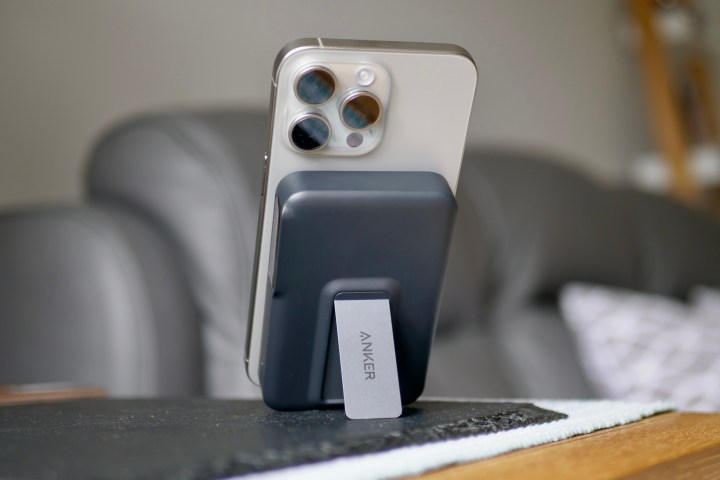
While the screen is very helpful and will be the feature that attracts the most attention, it won’t make your phone charge any faster. Also, while Qi2’s 15W wireless charging is quicker than the older 7.5W wireless charging standard, it’s still not great. Anker knows it, and that’s why you can plug a USB-C cable into the port on the power bank and into your phone to enable 27W wired fast charging.
This is the MagGo Power Bank’s secret weapon; sometimes you just want as much juice sent to your phone’s battery as possible in as short a time as possible. But its overall usefulness doesn’t end at charging. There’s a kickstand built onto the back of the battery pack and it supports the phone at an approximately 45-degree angle, making it great for desktop use. It activates StandBy mode too. Because the power bank uses MagSafe to hold on to the phone, the kickstand can be attached to it in either portrait or landscape orientation. The kickstand is spring-loaded and holds itself in place when closed, but doesn’t offer so much resistance that it’s difficult to open up.
The MagGo Power Bank 10K is far more versatile than an ordinary battery pack because of all this. Yes, it’s a fairly heavy piece of kit, but what big battery pack isn’t? I’d rather it served multiple functions if I’m going to carry it around, and this one works as a wireless charging stand and as a fast wired charger, too.
What about charging performance?
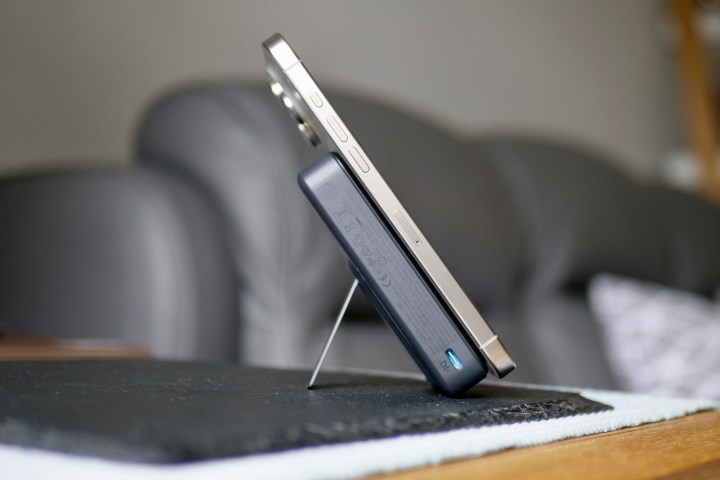
To see how fast the Qi2 wireless charging can be, I charged my iPhone 15 Pro Max from 50% battery to full using the fully charged Anker MagGo Power Bank. It took about an hour to reach 90% and an additional 40 minutes to reach 100%. The battery pack itself went from 100% to 58%, suggesting you can squeeze a single full charge plus a little more from the 10,000mAh cell. Both the phone and the battery pack got warm, but not hot, which is what you’d expect when using a fast charger.
I charged the iPhone without a case, which isn’t essential, but Anker does warn that some cases may affect the charging efficiency. The magnets in the case are strong, but if you are going to use a case on the phone, it must have MagSafe built in — otherwise, the phone won’t charge at all. According to Anker, if you use the 27W wired charging, it will take 30 minutes for a flat battery to reach 60%, which should be enough for a full day’s average use from an iPhone 15 Pro Max. You can also use the wired port to charge the internal battery at the same time as charging your iPhone wirelessly.
It’s made of aluminum, so it has a really high quality, substantial feel to it.
Let’s go back to the screen, as it’s not a complete success. When charging, it also shows a time in hours and minutes. When I placed my phone on it to charge, the screen showed 1 hour and 50 minutes, and by the end of the charge, it showed seven hours and 44 minutes. The times shown also fluctuate during the charging process, and it will show longer and shorter times throughout. I had no idea what these times mean either, so I checked with Anker. Apparently, it’s the amount of time you can leave the phone on charge based on the remaining energy in the power bank’s cell.
My brain doesn’t really do numbers, so this makes it hurt a bit when I try to work out how this would be helpful to know when there is a perfectly understandable percentage readout directly above it, and I feel it says basically the same thing. I’d really prefer something more obvious (and helpful) to be shown, like an approximate charge time, but I’ll accept this as the MagGo Power Bank’s only major downside.
Is it only for the iPhone?
That’s three distinctive features that make the MagGo Power Bank more than just a simple external battery for your iPhone. Currently, the iPhone is the only smartphone to use Qi2 charging technology, but it will be available for Android phones in the future. The MagGo Power Bank 10K is still compatible with other phones, though, and it wirelessly charged the Samsung Galaxy S24 Ultra, OnePlus 12, Nothing Phone 2, and the Xiaomi 14 Ultra when I tried them. However, it will only do so at the slowest speed.
Now that you know why the Anker MagGo Power Bank is so helpful, what about the rest of it? It’s a rectangular box that’s about two-thirds of the length of your iPhone 15 Pro Max, but it’s twice as thick and even heavier at nearly 20mm and 250 grams. However, it’s made of aluminum, so it has a really high-quality, substantial feel to it. You know it’s in your bag, but at least when you go to use it, the power bank itself never feels cheap or poorly put together.
Anker’s Wireless PowerIQ charging system uses an ARM processor and special algorithms to monitor charging speeds and temperatures to ensure everything runs safely and efficiently. The Anker MagGo Power Bank with a 10,000mAh battery inside costs $90. If I must carry a battery pack around with me, I’d rather it didn’t add its own annoyances. Outside of the confusing additional data shown on the screen, the Anker MagGo Power Bank earns its stripes by doing more than keeping my phone’s battery recharged.
Editors’ Recommendations

